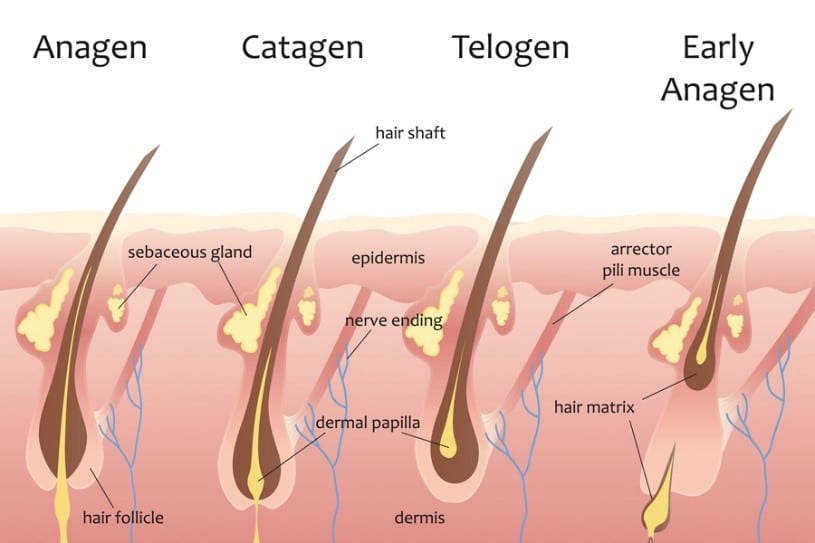What Is Telogen Effluvium?
Hair loss can be a distressing experience, and one of the most common forms that affects both men and women is telogen effluvium. This temporary hair shedding condition, while alarming, is typically reversible and occurs when a significant number of hair follicles prematurely enter the telogen (resting) phase of the hair growth cycle.
Understanding the Hair Growth Cycle
To comprehend telogen effluvium, it’s essential to understand the normal hair growth cycle. Each hair follicle goes through three main phases:
1. Anagen (Growth) Phase: This active growth phase typically lasts 2-6 years
2. Catagen (Transition) Phase: A brief transitional period lasting about 2 weeks
3. Telogen (Resting) Phase: A 2-3 month resting period before the hair naturally sheds
In a healthy scalp, approximately 85-90% of hair follicles are in the anagen phase, while only 10-15% are in telogen. However, when telogen effluvium occurs, up to 30% of follicles can shift into the telogen phase simultaneously, resulting in noticeable hair shedding.

Common Triggers of Telogen Effluvium
Telogen effluvium typically develops about 6-12 weeks after a triggering event. Common causes include:
* Physical stress: Surgery, severe illness, or high fever
* Emotional trauma: Death of a loved one, divorce, or severe anxiety
* Hormonal changes: Pregnancy, childbirth, or stopping birth control pills
* Nutritional deficiencies: Particularly iron, protein, and vitamin D
* Medications: Including beta-blockers, anticoagulants, and retinoids
* Dramatic weight loss: Especially from crash dieting or malnutrition
Signs and Symptoms
The primary symptom of telogen effluvium is increased hair shedding, often noticed during washing or brushing. Unlike other forms of hair loss, telogen effluvium typically affects the entire scalp rather than creating patchy areas. People may notice:
* Thinning hair across the scalp
* A wider hair part
* More hair on pillows, in shower drains, or on brushes
* A reduction in ponytail thickness
Diagnosis and Treatment
A qualified trichologist or dermatologist can diagnose telogen effluvium through examination and by taking a detailed medical history. They may perform a gentle pull test to assess the amount of shedding and possibly recommend blood tests to check for underlying nutritional deficiencies or medical conditions.
Treatment focuses on addressing the underlying trigger and supporting healthy hair growth through:
* Stress management techniques
* Balanced nutrition and appropriate supplementation
* Gentle hair care practices
* Scalp health optimization
* Lifestyle modifications
Recovery and Prevention
The good news is that telogen effluvium is usually temporary. Once the triggering factor is addressed, hair typically returns to its normal growth cycle within 6-9 months. However, the recovery process requires patience, as new hair growth is gradual.
To prevent future episodes, consider:
* Maintaining a balanced diet rich in proteins, vitamins, and minerals
* Managing stress through regular exercise and relaxation techniques
* Regular check-ups to monitor overall health
* Gentle hair care practices to minimize mechanical damage
When to Seek Professional Help
While telogen effluvium often resolves on its own, professional assistance is recommended if:
* Hair shedding persists beyond 6 months
* You experience scalp pain or irritation
* Hair loss is accompanied by other concerning symptoms
* You’re unsure about the cause of your hair loss
A trichologist or hair specialist can provide personalized treatment plans and support throughout your recovery journey.
Remember, while hair loss can be distressing, understanding the temporary nature of telogen effluvium and seeking appropriate support can help manage both the physical and emotional aspects of this condition.






